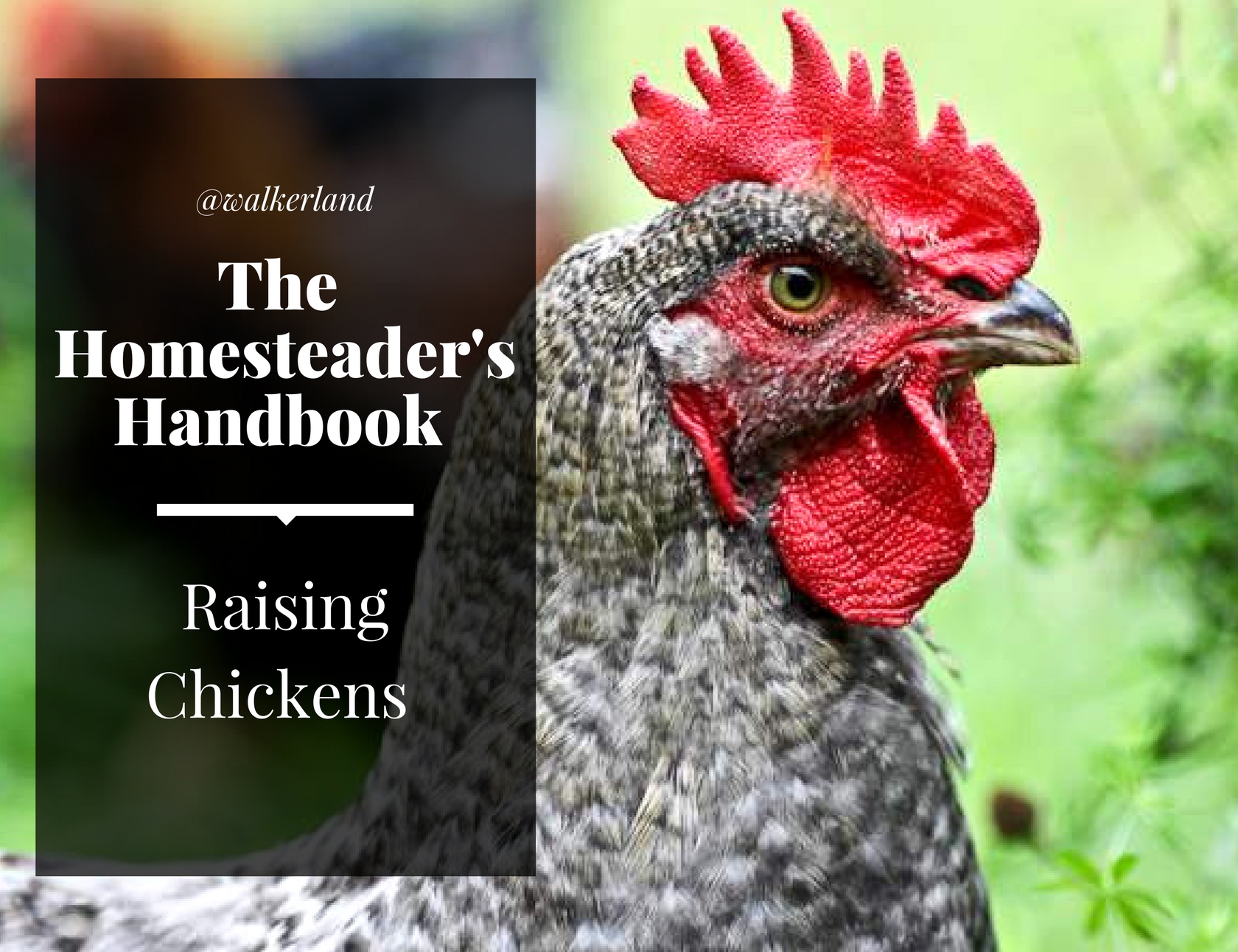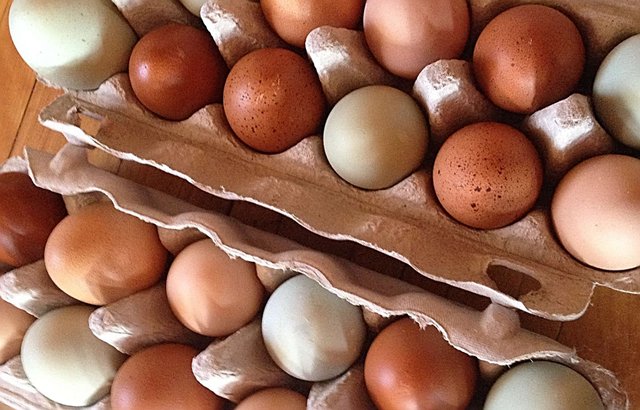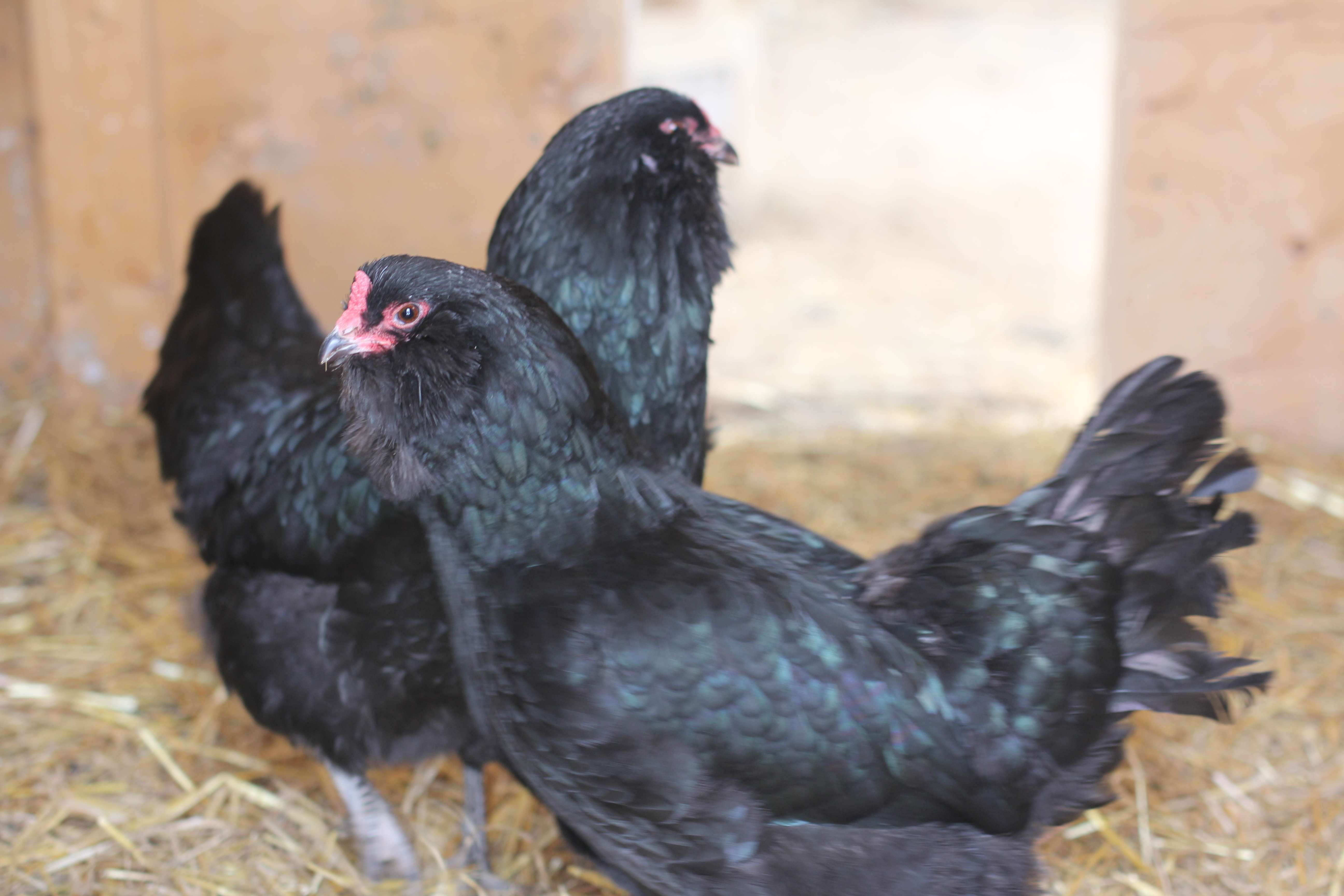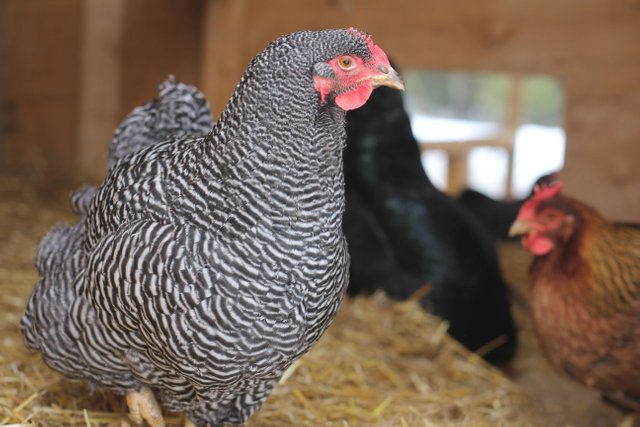The Homesteaders Handbook: Raising Chickens Part 6
.jpg)
This is the sixth part in a complete series on raising chickens! In this chapter we'll talk about caring for hens, understanding the pecking order, dealing with bullies and other hen specific topics!
You can find earlier chapters in this series here:
The Homesteaders Handbook: Raising Chickens Part 2 - Breeds, hybrid vs heritage and more
The Homesteaders Handbook: Raising Chickens Part 5 - Baby chicks
When your pullets get to about 16-24 weeks of age they will hit maturity. This is when things get exciting because soon you will have full fledged hens that lay eggs! You can expect to eagerly check those nesting boxes over and over in anticipation, only to find them empty. Rest assured eventually there will be beautiful eggs and that first discovery is quite thrilling.
When it comes to choosing breeds, heritage varieties really stand out for their lovely range of colored eggs and personalities to match. I truly suggest you skip the feed store hens and seek some of these speciality breeds out. You won't regret it!

I get asked this a lot so I will mention that regardless of the what the outside looks like, all of the eggs are the same in the inside.
When I wrote about and shared photos of my first big egg collection on Facebook, my husbands grandmother was just delighted by these eggs. Having lived on farms her whole life this was something she had never seen. One day over morning coffee with her friends she told them all about my beautiful eggs, and no one believed her. They assumed trickery was at play. I was a little taken aback. I had just assumed that these older heritage breeds used to be the standard but I suppose I got this impression from watching Little House on the Prairie. It turns out that hybrid layers of brown and white eggs have been the main choice in Canada for well over 80 years.
The resurgence and popularity of the old classic heritage breeds is really shaking things up. Green, blue, olive, dark chocolate brown, speckled, pink, cream - it's almost impossible to resist collecting hens based on the color of eggs they lay. When my husbands grandmother finally came for a visit she got to see the hens and the eggs up close and she was delighted. She asked me to boil a few of each color so that she could safely bring some home to show to her friends that there truly are all sorts of colored eggshells.
 Copper Maran Hen
Copper Maran Hen
Feed
At about 16 weeks you should start transitioning your hens to layer feed. It contains more calcium and other nutrients that the hens will need to stay healthy and produce eggs. You can also provide your hens with a dish of oyster shells or crushed eggshells so they can take more calcium when they need it. I cover feed options, nutrition and offering a varied diet in the chapter titled: Feeding your flock.
Nesting Box
Your hens will want privacy when they go to lay eggs. You will need to provide them with nesting boxes and you should have them accessible to the hens just before they are due to start laying. You want to give them an enticing location so that they don't go and find their own secret spot elsewhere that you don't know about. Keep in mind that you want to block off access to the nesting boxes when the chickens are young to prevent them from developing bad habits such as sleeping in the boxes. You want those boxes clean and single purpose. Simply place some boards or chicken wire on the entrance to the boxes and then remove it around the time they are due to start laying. If you have mixed ages in the coop you may need to block it off at night and then open it up again in the early morning until your youngest birds are old enough to start laying.
Nesting boxes can be purchased pre-made in a variety of materials including plastic, or they can be made of lumber. Each box should be approximately 12 inches square and about 18 inches deep. Install one nest box for every two hens and place them a few feet above the ground but lower than the roosts. Line the nests with straw, dried grass, wood chips or even shredded paper to provide a nesting area and help keep the eggs clean.
We installed our nesting box on the outer wall of the coop. This makes it easy for me to grab eggs without going into the coop at all, and it also ensures that the hens can't jump on the top of the nesting box to roost, something you really don't want to have happen. Regardless of nesting box style, you can easily affix a barrier above the boxes should this become a problem for you.
Pecking Order
Hens form strong social groups and establish a pecking order very quickly after being introduced to each other. Usually the rooster will lead the flock and then from there there will be the top (most dominant) hen all the way down to the lowest ranking hen. Once the pecking order has been worked out and each hen knows its place in the flock, they get along quite well. Sometimes there will be some fighrting and bickering as they work out the ranks. Although it might seem unsettling to you, this is how they establish order so try not to interfere, they know what they are doing.

Bullying
Often when chickens get bored there will be trouble. In the winter they seem quite content to hang out on the roosts, keeping warm but when spring arrives, there is inevitably going to be some trouble in the hen house. They are restless to get back to pecking grass and feeling the sunshine on their skin (a lot like us really). Pecking another bird can mean real trouble for the bird being bullied. Blood draws the other birds to peck as well.
If this happens the best option is to segregate the bully or the victim from the rest of the flock. It really depends on the situation. If you have a hen that is bullying everyone then she needs to get removed for a time out. Give a bully a time out for four or five days and then bring her back. If her aggressive behaviour continues it might be time to consider the soup pot for her.
 Ameraucana Hen
Ameraucana Hen
Injury
A wounded hen needs to heal otherwise the others will just continue to peck her. When an injured hen is segregated she should still be located near to the other hens where they can see and hear her. She will remain part of the same flock, even if separated if they can see her. If you completely remove the hen and then try to re-introduce her,then you deal with integrating her back into the flock. Don't just put her back in with the others as pecking and bullying might just resume and you will end up going through the whole process again.
If you can't segregate the hen you can try to give her a heavy coat of blue or purple coloured wound treatment made for poultry or livestock. The blue color hides the redness of the wound and its the colour red that attracts the hens to peck at the wound. You can also cover this with a chicken saddle, you can search for these on-line and you will see how they work. If you are handy with a sewing machine they are pretty easy to make. The saddle can hide and protect the wounded area from the other birds until she is healed up.
 Jeanie wearing a "chicken saddle" to protect her injured back from further pecking.
Jeanie wearing a "chicken saddle" to protect her injured back from further pecking.
Introducing new hens to your flock
The pecking order is very sensitive. An established flock will not welcome other hens outside their group. They can be vicious to newcomers and they aren't going to make this task easy for you. Introducing new hens to an established flock requires attention, patience and often takes a couple of weeks.
All new hens should ideally be kept separate for the first week quarantined from your healthy flock. You will want to watch for illness or issues before beginning the process of introducing new birds to the flock.
You are going to be shaking up the pecking order completely so you might as well take advantage of this. Consider moving your existing flock to a new coop or shelter, taking them out of their comfort zone. You can then move the new hens into the main coop so that they can get familiar and comfortable with the surroundings. The goal is to put the two groups of birds on more equal footing. This isn't always possible but whatever you do don't just add the new birds and expect it to all be fine. (that is never the case).
Make sure the birds can see one another in the run but partition it so that they can't access each other yet. This can also be a helpful approach when you have to remove an injured bird from her flock as the process for reintroducing her will be the same. Careful and gradual.
Over time allow them to mingle but supervise them. They might seem to be getting along just fine but it wont take long for the dominant hens to start their campaign to remain at the top. They will start bullying the newcomers, preventing them from eating and drinking and often pecking at them and attacking their combs. This behavior can be quite aggressive but it is natural. Over time the dominant birds will reestablish their ranks. the lower ranking birds tend to fall into place very quickly.
*Once you have integrated the flocks be mindful of making sure they can access the outdoors very early in the morning. This will go a long way towards preventing some of the squabbling and will give the chickens space from one another.
- It's also a good idea to add distractions. Throw in a few chopped up pumpkins. Give them a big pile of straw with treats hidden throughout. Giving them plenty of distractions will keep their mind off the newcomers.
Integrating new chickens sounds like a bit of a pain, and it certainly can be. Try to start with a good number of hens to prevent the necessity of doing this but if you must add more chickens, be mindful of the social balance and upset that it causes and take it slowly.
 Welsummer Hen
Welsummer Hen
Molting
Once per year usually during autumn or spring, your chickens will go through a process called molting. This is the cycle where chickens will shed their feathers and grow fresh new ones. This normally happens when the weather starts to cool but it can happen any time. Although uncommon, it can happen twice yearly with some chickens. This happens to both hens and roosters. It is a normal, beneficial process that takes around six weeks for the birds to complete but in some cases can take as long as three months. During the molting period, hens tend to stop laying eggs so that they can reserve those nutrients for growing new feathers.
It is pretty easy to tell they are molting from their appearance alone. They will look patchy, have bald areas or what appears almost like fish bones sticking out in clumps. Although not pretty, this process helps your chickens stay healthy and clean.
You can help them by providing additional food with extra protein and nutrients during this time.
This is a great time to collect feathers being as they are lying all over the place. Be sure to wash them well before using.
 Barred Rock Hen
Barred Rock Hen
In the next post I'll continue with hens covering broodiness and hatching chicks via natural and incubator methods.
This content comes from my Ebook "The Homesteader's Handbook: Raising Chickens". I've decided to give the knowledge away here on steemit where it may help those looking to get into raising chickens. This was always my intention when writing this book.
All rights reserved. Photos copyright @walkerland The information in this book is true and complete to the best of our knowledge. All recommendations are made without guarantee. The author and publisher disclaim any liability in connection with the use of this knowledge.
Building a greener, more beautiful world one seed at a time.
Homesteading | Gardening | Frugal Living | Preserving Food| From Scratch Cooking|
You can also find me at: walkerland.ca
Photo copyright: @walkerland

Picking can also start if the protein is too low or they have a great need for animal protein, as feathers are something like 90% protein.
Another excellent post!
Great point! Very true.